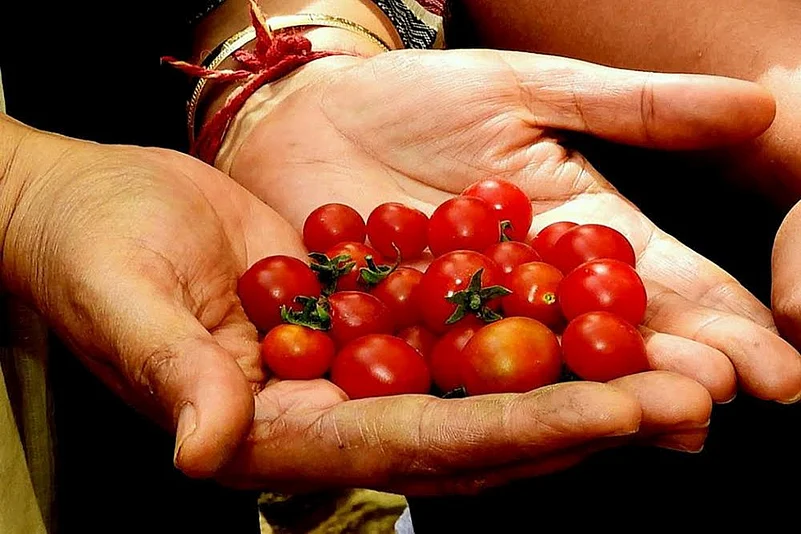Farming with natural inputs is increasingly popular in today’s world: be it natural farming, where nature does her work, or organic farming, where no synthetic inputs are used. As cities grow in complexity, with more buildings, traffic and people eating into green space, the idea of growing one’s own food has attracted attention. At the heart of lie those barren, vacant plots and frequently abandoned post-industrial derelict sites, integral to cities. They carry the potential and promise of this new kind of cultivation, where urban netizens can be transformed into producers of their own food.
Enhancing urban living
Growing your own food means managing household budgets and promoting natural and organic farming. The health benefits, coupled with the community-building nature of a common gardening space, mean that people everywhere can get involved. Growing cities also produce more and more waste water and organic wastes. Urban agriculture can help to solve such problems, by turning urban wastes into a productive resource: quality compost, which is an important input in this kind of farming. The impact of all this goes far beyond those directly involved—to the greening of cities, the productive reuse of urban idle land, conservation of natural resources and improving the environment for urban living. The use of idle urban lands does not have to be permanent, or even long term, but for very adequate interim use.
Designing an urban farm
Keeping in mind all these, we built a low-cost polyhouse (a greenhouse type of structure made of translucent material, where plants grow and develop under controlled climatic conditions), to grow organic vegetables, spice and medicinal plants in patches of idle urban areas around Noida and Greater Noida in the National Capital Territory.
The advantages of a polyhouse are several. Plants can be grown as per requirement, irrespective of weather conditions, because it is a closed structure. The covering of polythene sheets protects seedlings and plants from insects and pest attacks to a great extent, ensuring the production of healthy seedlings. Plants grow faster inside the structure, because the temperature remains a little higher inside the polyhouse, even when it is cooler outside.
Our team designed a structure, about 12 ft high, that covered two nursery beds with a capacity of a thousand seedlings. The attempt was to ensure that it would not be easily blown away by the wind. To maintain the relative humidity, the sides of the structure was covered with insect-proof net, four feet in height. For proper cross ventilation, a provision was made to roll the polythene sheet up to the height of net provided. This ensured that humidity would be less and, therefore, less chance of the damping-off disease of young seedlings. Drip irrigation system was installed for proper use of water.
Of crops and foods
Quality seedlings of high-yielding cultivars of tomato, capsicum and cucumber were planted inside the polyhouse, while 150 seedlings of broccoli were transplanted in the open area. All recommended agro-practices were followed. Every crop grew tall and strong. The word spread and a number of residents of Noida, and farmers, visited our project. Their excitement over our structure, design, plans and crops were palpable. They also showed keen interest to start their own green patches. This was our first exploration into the possibilities of growing our food crops on idle urban land. The experiences led the team to make further changes in the design of the low-cost polyhouse, as well as, introduce new techniques to grow vegetables, spices, medicinal and ornamental crops in different locations—residential areas, schools, idle lands—of the city.
Dream coming true
The impact of our low-cost polyhouse natural and organic farming on idle urban land was beyond our expectations. The word spread and a number of residents of Noida, and farmers, visited out project. Their excitement over the design, structure, plans and crops were palpable. They also showed keen interest to start their own green patch. As a result, national newspapers, magazines and electronic media publicised our work in their reports, people across the country, and even abroad, sought our advice and guidance to replicate it in their own areas. School children regularly visited our polyhouse, to get practical experience so they can grow their own organic vegetables.
Our ultimate objective was to motivate fellow urbanites to start farming, grow own food, reuse wastes into productive resources, spread awareness about nutrition and environment, a cleaner, greener city, productive use of neglected areas, more organic products for good health and more employment opportunities. Such innovations can also act as important strategies for poverty alleviation and social integration, ensure a sustainable urban ecosystem and protect biodiversity. Several examples exist of municipalities or NGOs that have initiated such projects involving disadvantaged groups, such as, orphans, disabled people, women, migrants without jobs, or elderly people, to integrate them more into the urban network and to provide them with a decent livelihood.
Last word
The project was so motivating, that we are now looking to spread the idea and utilise idle urban lands for farming across cities and contribute our bit towards better environment and health of the nation.
















